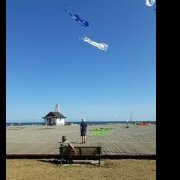CAT-CDMA Load Balancing Replacing Ipstar Satellite Internet
-
Recently Browsing 0 members
- No registered users viewing this page.
-
Topics
-
-
Popular Contributors
-
-
Latest posts...
-
20
Report Thai Tourist's Paris Ordeal: 10,000 Baht Lost in Violent Robbery
And that is just the nanny state governments and the EU. -
60
SIDS - Sudden Infant Death Syndrome - Is Caused By Vaccines
I have had 4 different types of cancer. Apparently 5 is the record. Nature had no answers for them, modern medicine did. Cancer cells are immortal. The telomeres that compel normal cells to die are deactivated. Cancers can be put into remission by surgery, immunotherapy, chemotherapy, and radiation. I have had three out of four. No doctor ever says a cancer is cured. The gold standard for cancer detection is a CAT scan with radioactive sugar. Cancer cells take up sugar far faster than normal cells. If you don't believe in the evidence of a scanning electron microscope, what chance does a CAT scan have? -
572
Do you know your wife/girlfriends body count?
your veneer of civility seems to be slipping, Fred. Is repeating the same argument and replying to every comment wearing on you? -
60
Crime American Man Arrested at Phuket Airport for Smuggling 6 kg of Heroin
Well, The both of them are White Powder !! -
60
Crime American Man Arrested at Phuket Airport for Smuggling 6 kg of Heroin
Why is it that every time we hear of a drug bust it involves tip-offs? Does it suggest otherwise that it’s safe to smuggle? -
23
USA CBS Drops Bombshell: Stephen Colbert's 'Late Show' to End in 2026
I do, Do you believe other journalists have been cancelled for criticizing Israel? https://objectivejournalism.org/2023/11/us-journalists-censorship-supporting-palestine/?ut
-
-
Popular in The Pub





.thumb.jpeg.d2d19a66404642fd9ff62d6262fd153e.jpeg)







Recommended Posts
Create an account or sign in to comment
You need to be a member in order to leave a comment
Create an account
Sign up for a new account in our community. It's easy!
Register a new accountSign in
Already have an account? Sign in here.
Sign In Now